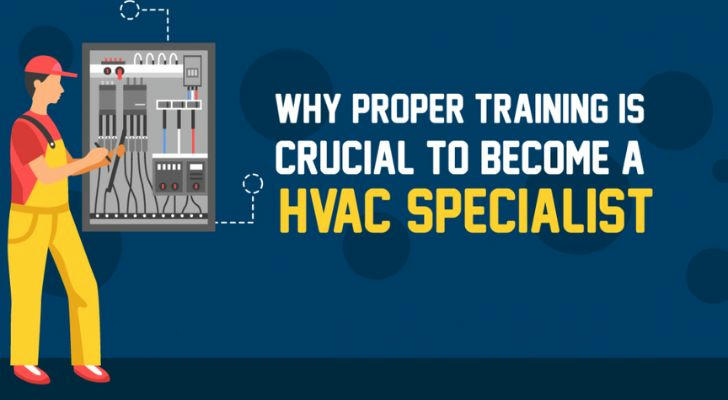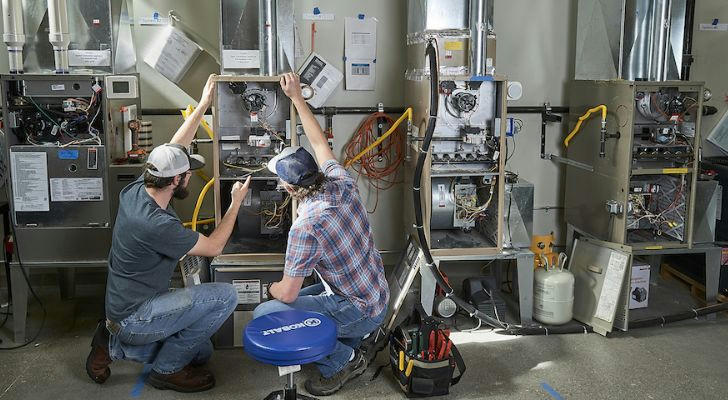2025 Government-Supported Paid HVAC Training: Opening the Door to High-Paying, Stable Careers
As global demand for energy efficiency and green building technologies continues to rise, the HVAC (Heating, Ventilation, and Air Conditioning) industry is experiencing unprecedented growth opportunities 🌍💡. However, many people still worry about how to cover the cost of expensive training 💸. Fortunately, government and companies have partnered to launch paid HVAC training programs, allowing students to earn while they learn, thereby alleviating financial burdens for many. 💰

What is Government-Supported Paid HVAC Training? 🏆
Government-supported HVAC training programs are supported by federal and local governments such as the U.S. Department of Labor and the Department of Energy. These programs aim to provide students with comprehensive career skills training. In these programs, students not only gain work experience through apprenticeships but also earn a salary during the training period.
- Earnings during training: Students typically earn between $18 to $23 per hour 💵.
- Post-graduation wages: Starting hourly rate of $27+, with 90% of graduates securing jobs. 📈
Why Choose HVAC Training? 🤔
Earn While You Learn 💵
Unlike traditional college education, HVAC apprenticeships offer paid work, allowing students to earn income during training and avoid tuition debt. 💳
High Demand and High Income 📊
- Industry growth: The demand for HVAC technicians is set to grow significantly.
- Salary potential: Entry-level technicians earn $45,000–$55,000 annually, with experienced professionals earning $80,000+ per year. 💼💰
Short-Term Training, Quick Employment 🕒
Many HVAC programs take just 4 to 12 months to complete, allowing students to enter the workforce quickly. 🚀
Job Security 💼
94% employment rate for graduates of government-supported HVAC apprenticeship programs! 🎯
No High Tuition Fees 🏫
Most government-supported HVAC programs are supported by governments or employers, so students benefit from tuition support and other living allowances, avoiding the high costs of traditional college education. 🎓
Government-Supported Training Programs 🎓
These programs equip students with technical skills while focusing on energy efficiency and environmental technology. Some of the key benefits include:
- Tuition Assistance and Living Allowances: Tuition fees can be supported, with some states offering additional living stipends.
- Paid Apprenticeships: Students gain hands-on experience while earning a paycheck. 🛠️💵
- Certification and Career Development: Students earn industry certifications like EPA 608 and NATE (North American Technician Excellence), increasing their competitiveness. 🏅
Who Should Join Government-Supported HVAC Training? 👥
Career Changers 🔄
HVAC training is perfect for individuals transitioning from industries like construction, manufacturing, or retail to a high-paying, stable career.
Young People (18-24 years old) 👩🎓👨🎓
Ideal for recent high school graduates or individuals with equivalent education. The program provides both hands-on experience and a paycheck, while helping to avoid high costs of traditional education. 🎓💡
Low-Income Individuals 💡
For those with limited financial resources, these training programs offer tuition and living allowances, helping individuals break into the high-paying HVAC field. 💰
Caregivers 👨👩👧👦
For those supporting their families, paid apprenticeships provide an opportunity to earn while gaining valuable skills. 💼👶
Older Individuals (50+ years old) 👴👵
HVAC is an excellent option for individuals looking for stable, low-physical-demand jobs with attractive pay. Many HVAC companies value apprentices who bring experience and a strong work ethic. 👍
How to Get Started with HVAC Training? 🚀
Confirm Eligibility ✅
- Most programs require students to be at least 18 years old, hold a high school diploma or GED, and pass basic math and physical tests.
Find the Right Training Program 🔍
- Search for government-supported apprenticeship programs through platforms like Apprenticeship.gov, and select courses and institutions that best fit your needs.
Apply and Complete the Training 📝
- After completing the theoretical part of the program, students enter the apprenticeship phase to gain real-world experience, eventually earning industry certifications.
Find a Job 💼
- Many graduates enter high-demand fields and secure stable, well-paying jobs. Employers often offer priority hiring to graduates, ensuring a smooth transition into the workforce. 🚀

Real Case Study:
For example, Sarah Jensen, a single mother from Michigan, struggled with a $14 per hour retail job. After enrolling in a government-supported HVAC training program, she earned $20 per hour during her 10-month apprenticeship. Upon completing the program, she earned EPA 608 and NATE certifications, joining a local HVAC company with a starting wage of $28 per hour, and an annual salary of $58,000. 🌟
Her success story demonstrates how government-supported HVAC training can help individuals transform their careers and improve financial stability. 💪
Conclusion 🏁
If you're looking for a high-paying, stable career that you can quickly enter, HVAC training is a fantastic option. Government-supported paid apprenticeships allow you to earn while you learn, providing ample job opportunities. As the HVAC industry continues to grow, the demand for skilled workers will remain high, making now the best time to enter this field. 🚀
By participating in paid training, you not only gain valuable technical skills but also pave the way for a stable and promising career. 🌟 method

